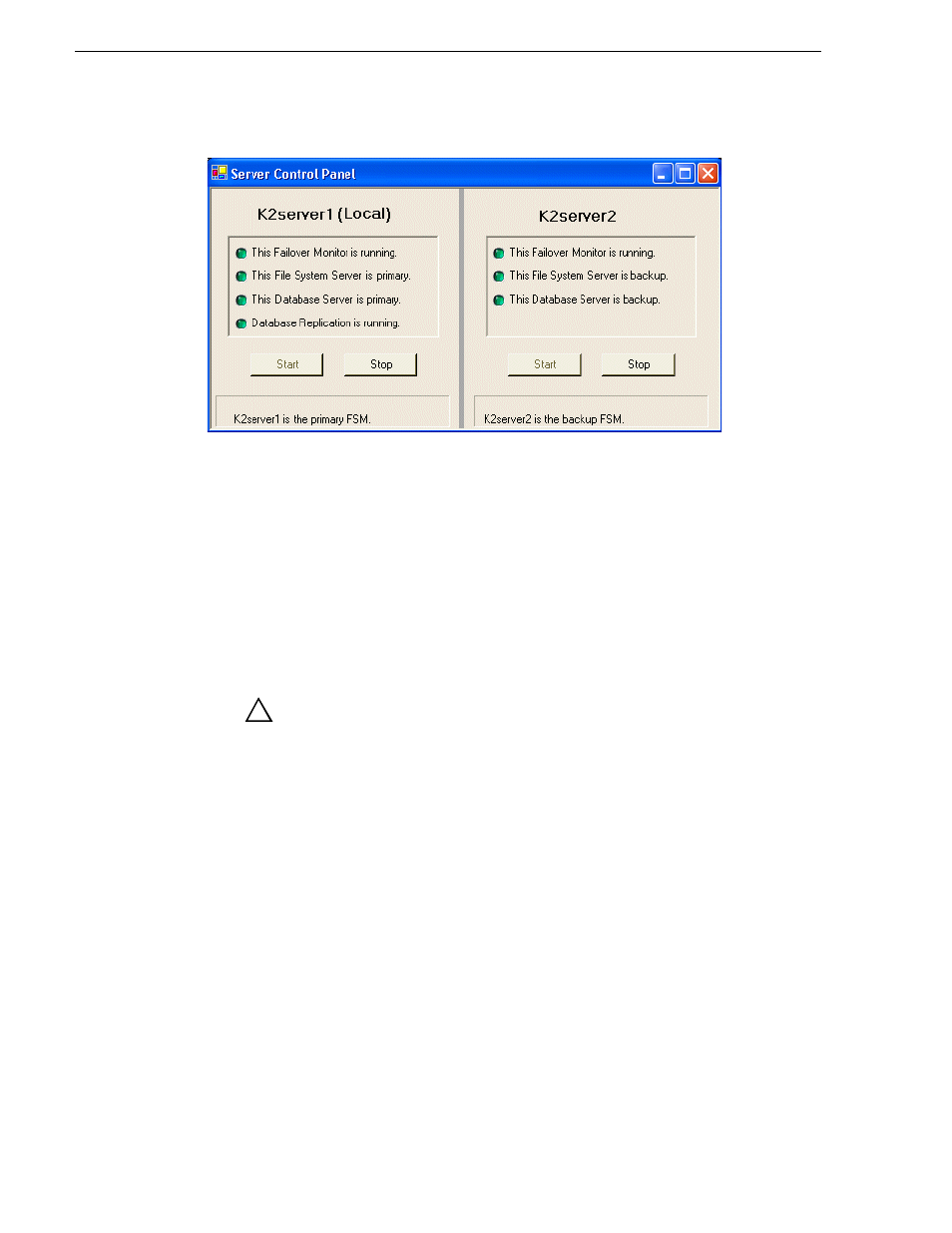Triggering an intentional failover – Grass Valley K2 Storage System Instruction Manual v.3.2 Aug.01 2007 User Manual
Page 332

332
K2 Storage System Instruction Manual
July 3, 2007
Chapter 11 Administering and maintaining the K2 Storage System
4. Determine if the local machine is currently the primary K2 Media Server or the
backup K2 Media Server.
If the K2 Storage System does not have redundant servers, only one server (the left
half of the Server Control Panel) is displayed, and there is no indicator for database
replication.
For the K2 Media Servers of a Nearline K2 Storage System, Server Control Panel on
the local K2 Media Server reports if the server is the current active media file system
(SNFS) server. No database information is displayed, since the Nearline system does
not have a media database.
Triggering an intentional failover
WARNING: Do not attempt this procedure except under the
supervision of qualified Grass Valley personnel.
The following procedure renders the primary K2 Media Server unqualified to carry
out its role in managing the K2 Storage System. The backup K2 Media Server detects
this condition and triggers a failover in which it takes the primary FSM out of service
and takes control of the K2 Storage System. Therefore, before using these procedures,
verify that the backup K2 Media Server is fully operational and qualified to take
control of the K2 Storage System. If there has been a recent failover event, wait until
media database replication processes are complete. Also, be aware that the failover
capabilities of the K2 Storage System are degraded until you place the machine back
into service as the backup K2 Media Server.
You should stop all media access before attempting this procedure. If media access is
underway, there will be period of time in which media loss will occur.
In the following procedures, K2server1 and K2server2 represent your redundant K2
Media Servers. The procedure begins with K2server1 acting as the primary K2 Media
Server.
1. Verify primary/backup roles, make sure that replication is complete, and make sure
K2server2 (the backup) is qualified and ready to become primary.
!